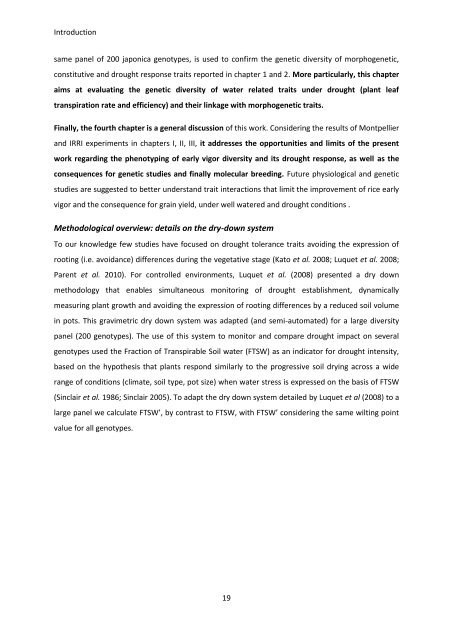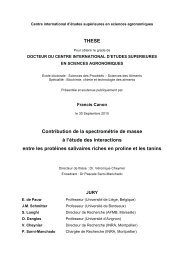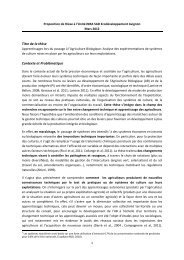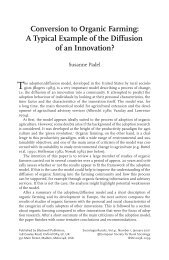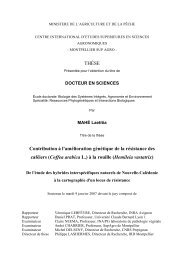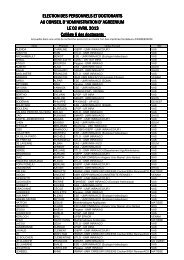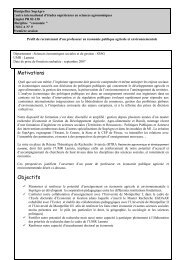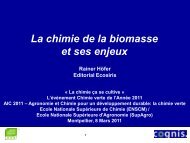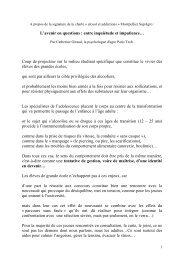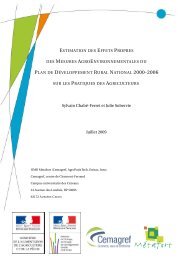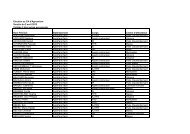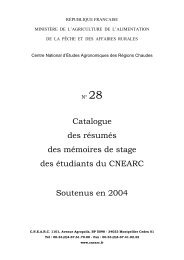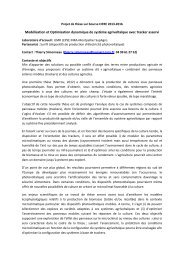Rice (Oryza sativa. L) genetic diversity for early vigor and drought ...
Rice (Oryza sativa. L) genetic diversity for early vigor and drought ...
Rice (Oryza sativa. L) genetic diversity for early vigor and drought ...
- No tags were found...
Create successful ePaper yourself
Turn your PDF publications into a flip-book with our unique Google optimized e-Paper software.
Introductionsame panel of 200 japonica genotypes, is used to confirm the <strong>genetic</strong> <strong>diversity</strong> of morpho<strong>genetic</strong>,constitutive <strong>and</strong> <strong>drought</strong> response traits reported in chapter 1 <strong>and</strong> 2. More particularly, this chapteraims at evaluating the <strong>genetic</strong> <strong>diversity</strong> of water related traits under <strong>drought</strong> (plant leaftranspiration rate <strong>and</strong> efficiency) <strong>and</strong> their linkage with morpho<strong>genetic</strong> traits.Finally, the fourth chapter is a general discussion of this work. Considering the results of Montpellier<strong>and</strong> IRRI experiments in chapters I, II, III, it addresses the opportunities <strong>and</strong> limits of the presentwork regarding the phenotyping of <strong>early</strong> <strong>vigor</strong> <strong>diversity</strong> <strong>and</strong> its <strong>drought</strong> response, as well as theconsequences <strong>for</strong> <strong>genetic</strong> studies <strong>and</strong> finally molecular breeding. Future physiological <strong>and</strong> <strong>genetic</strong>studies are suggested to better underst<strong>and</strong> trait interactions that limit the improvement of rice <strong>early</strong><strong>vigor</strong> <strong>and</strong> the consequence <strong>for</strong> grain yield, under well watered <strong>and</strong> <strong>drought</strong> conditions .Methodological overview: details on the dry-down systemTo our knowledge few studies have focused on <strong>drought</strong> tolerance traits avoiding the expression ofrooting (i.e. avoidance) differences during the vegetative stage (Kato et al. 2008; Luquet et al. 2008;Parent et al. 2010). For controlled environments, Luquet et al. (2008) presented a dry downmethodology that enables simultaneous monitoring of <strong>drought</strong> establishment, dynamicallymeasuring plant growth <strong>and</strong> avoiding the expression of rooting differences by a reduced soil volumein pots. This gravimetric dry down system was adapted (<strong>and</strong> semi-automated) <strong>for</strong> a large <strong>diversity</strong>panel (200 genotypes). The use of this system to monitor <strong>and</strong> compare <strong>drought</strong> impact on severalgenotypes used the Fraction of Transpirable Soil water (FTSW) as an indicator <strong>for</strong> <strong>drought</strong> intensity,based on the hypothesis that plants respond similarly to the progressive soil drying across a widerange of conditions (climate, soil type, pot size) when water stress is expressed on the basis of FTSW(Sinclair et al. 1986; Sinclair 2005). To adapt the dry down system detailed by Luquet et al (2008) to alarge panel we calculate FTSW’, by contrast to FTSW, with FTSW’ considering the same wilting pointvalue <strong>for</strong> all genotypes.19


